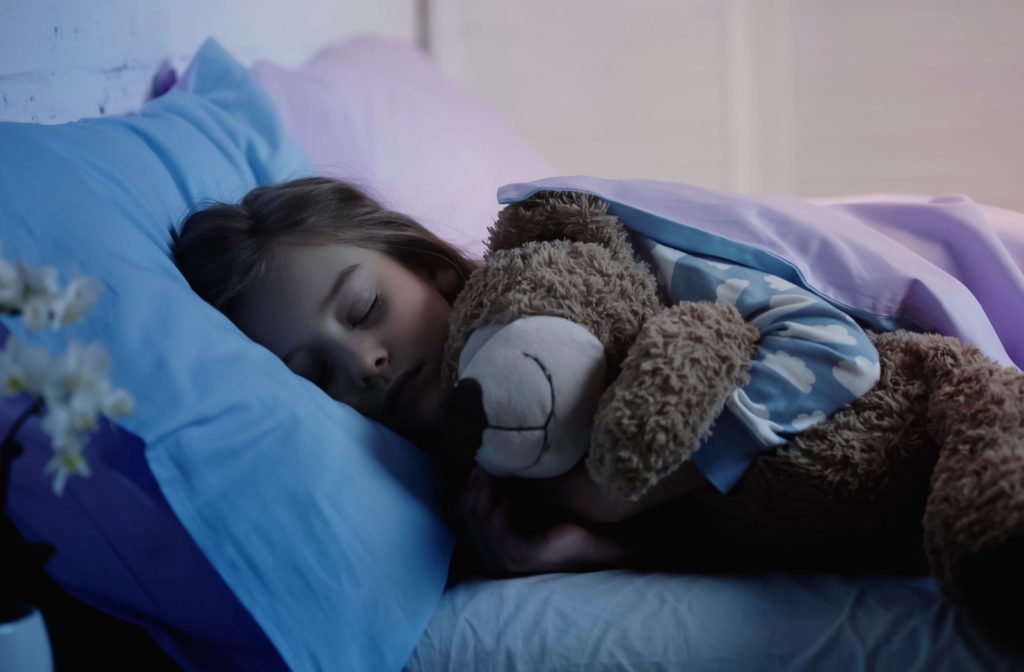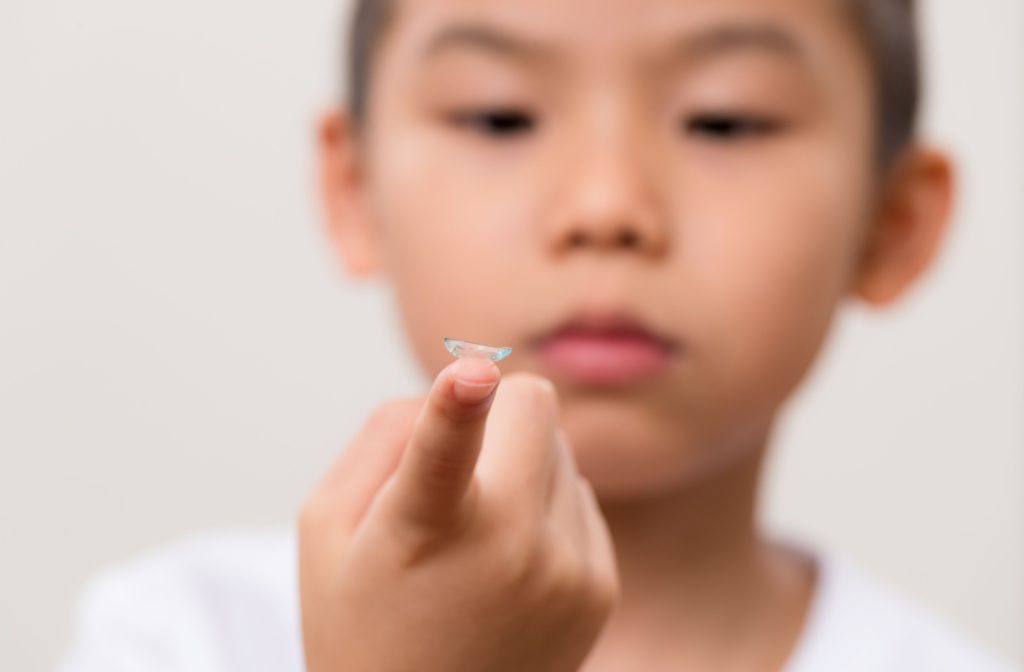In a world where screen time is on the rise, myopia in children is becoming increasingly common. Many parents search tirelessly for practical solutions to help manage their children’s vision. Orthokeratology (Ortho-K) is a promising non-surgical option for correcting myopia or other vision problems using special nighttime lenses.
Unlike regular contact lenses, these lenses only need to be replaced every 6-12 months, but their lifespan can vary depending on their use and care.
What is Ortho-K & How Does It Work?
Orthokeratology, or Ortho-K, is a specialized process that uses gas-permeable contact lenses to reshape the cornea temporarily. It is akin to orthodontics for teeth, where gradual adjustments lead to a desired outcome.
The design of these lenses works overnight, gently molding the eye’s curvature. This leads to improved vision during the day without needing glasses or traditional contact lenses. This reshaping allows light to focus correctly on the retina, reducing the effects of myopia.
Parents often find Ortho-K appealing because it offers a noninvasive way to manage their child’s vision. The correction is temporary, so if they stop using the lenses, their child’s vision will return to its pre-Ortho-K state.
Who Can Use Ortho-K?
Ortho-K lenses are generally suitable for children and adults with mild to moderate myopia. For parents considering this option for their children, it’s important to note that Ortho-K is particularly beneficial for those not yet candidates for laser eye surgery due to age.
Children with active lifestyles can benefit significantly from Ortho-K. These lenses eliminate the need for glasses during sports or outdoor activities, offering freedom and flexibility. Additionally, Ortho-K may slow myopia progression in children, providing long-term benefits for their eye health.
However, not every child is a suitable candidate for Ortho-K lenses. Children with severe myopia or other eye conditions may need alternative solutions. An eye care professional can assess your child’s suitability through comprehensive eye exams and corneal measurements.
When Will Ortho-K Lenses Start to Work?
Many users experience noticeable improvements in vision after just one night of wear. However, achieving optimal results can take a few days to weeks. During this initial adjustment period, some children might still need to wear glasses or contact lenses during the day. Parents must remind their children to wear the lenses consistently each night to speed up the adaptation process.
Regular follow-ups with an eye care professional are crucial during the initial phase of Ortho-K use. These visits ensure the lenses fit well, the corneal reshaping progresses as expected, and any potential complications are promptly addressed.

How Long Should You Wear Ortho-K Lenses?
For effective myopia management, children should wear Ortho-K lenses every night. Consistency is critical to maintaining the reshaped cornea and ensuring clear vision throughout the day. Skipping even one night can result in blurred vision until the lenses are worn again.
Parents must be diligent about their child’s nightly routine, ensuring they put the lenses in before bedtime. After the initial adjustment period, some children may find they can skip a night or two without significant loss of vision correction, but this varies for each individual.
Can You Wear Ortho-K Lenses Forever?
While Ortho-K lenses offer a temporary solution for myopia, they are designed for long-term use. They can be used as long as the lenses remain practical and comfortable. However, some children may naturally outgrow the need for Ortho-K as their eyes mature or explore permanent options like laser eye surgery when they reach adulthood.
How Often Should You Replace Your Ortho-K Lenses?
Ortho-K lenses should be replaced regularly to ensure optimal eye health and lens performance. Repeated cleaning and handling can cause wear and tear over time, leading to changes in fit or comfort. Regular replacement ensures that your child receives the best possible vision correction and reduces the risk of eye infections.
Parents must follow the cleaning and storage instructions the eye care professional provides. Proper care prolongs the life of the lenses and helps maintain their effectiveness in reshaping the cornea.
Most eye care professionals recommend replacing them every six months to a year, depending on the brand and usage.
What Are the Advantages & Disadvantages of Ortho-K?
Ortho-K lenses offer several advantages for children with myopia, including:
- Freedom from glasses during the day, making them ideal for active children.
- The potential to slow the progression of myopia
- Non-surgical and reversible, making it a safe option for children who may not be ready for permanent procedures.
- Clear vision during the day without the need for corrective eyewear.
However, there are some disadvantages to consider, including:
- Ortho-K lenses and regular eye exams can cost more than traditional contact lenses or glasses.
- Consistent wear and care are required to maintain effectiveness, which may not be suitable for every child.
Parents should weigh the pros and cons of Ortho-K lenses carefully, keeping their child’s unique needs and lifestyle in mind. Consulting with an eye care professional can provide further insights into whether Ortho-K suits their child’s myopia.
The Ortho-K Advantage
Ortho-K lenses offer a promising solution for managing myopia in children. They provide clear vision without needing daytime corrective eyewear, can be used long-term, and don’t require frequent replacement.
Regular follow-ups with an eye care professional ensure the ongoing success of Ortho-K treatment, allowing parents to monitor their child’s progress and make necessary adjustments.
Total Vision knows that Ortho-K requires a commitment to consistent wear and care, but the benefits can outweigh the challenges for many families. Contact us today to see how we explore Ortho-K lenses further together to help your child achieve clearer vision and potentially slow the progression of myopia.


